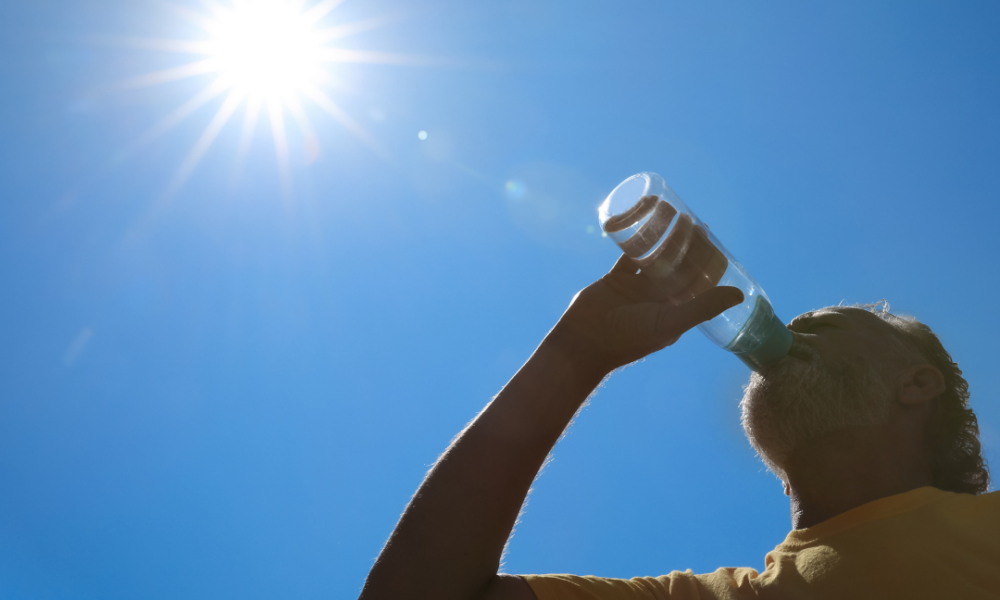The Rising Threat of Extreme Urban Heat in Missouri
Residents in major Missouri cities are increasingly feeling the urgent and impactful effects of extreme urban heat.
This phenomenon, known as the Urban Heat Island (UHI) effect, occurs when urban areas experience significantly higher temperatures than their rural surroundings. The results that we all experience are not limited to our discomfort. They also come with environmental damage, increased energy consumption, and severe health risks. In fact, Thirty-four Missourians died due to heat-related illnesses in 2023.
“Extreme urban heat is a growing concern in our state and something we cannot wait to get under control. Unchecked increases in temperature will lead to more frequent heat waves, diminished air quality, and greater healthcare costs, which all have huge impacts on the well-being and lifestyles of people today and generations to come. Our future depends on taking action to address this important issue now,” says MCE Policy Coordinator, Elyse Schaeffer.
Temperature Trends in Missouri Cities
St. Louis, Kansas City, and Springfield have all experienced rising temperatures over recent years, a trend driven by global climate change and the UHI effect. The rising temperatures have significant implications for public health, the amount of energy we need to consume to stay safe, and our overall quality of life.
St. Louis
St. Louis experiences 35-40 days per year with temperatures of 90°F or higher and around five days each year when temperatures exceed 100°F. The combination of dense urban infrastructure and limited green space exacerbates urban heat, leading to consistently higher temperatures, especially during the summer months. Data suggests that in 30 years, St. Louis will experience 21 days above 108ºF due to our changing climate.
Kansas City
In Kansas City, extreme urban heat trends are similar, with the city and the Metro areas frequently recording temperatures significantly higher than their rural surroundings. The city’s extensive development, which includes vast stretches of concrete and asphalt, contributes to this heat retention, making summers increasingly unbearable and heightening the demand for energy to cool homes and businesses.
MCE spent much of the summer of 2024 fighting against KC Ordinance 240434 because it would discourage more energy-efficient homes in Kansas City, directly influencing the increased temperature of the city overall.
Springfield
Even as a smaller Missouri city, Springfield is not immune to rising temperatures. Over the past decade, the city’s growth and development have led to increased heat absorption, and Springfield’s upward-trending average summer temperatures have already started impacting the local community.
Columbia
Columbia, MO experiences extreme urban heat due to factors similar to those affecting other major cities in Missouri. The built environment, characterized by concrete and asphalt, traps more heat compared to natural landscapes. Despite its moderate density, Columbia still faces elevated heat levels, mainly due to limited green spaces and vehicular emissions. Moreover, college campuses such as the University of Missouri-Columbia, with their large buildings and facilities, consume significant amounts of energy for cooling during hot periods, contributing to higher local temperatures due to waste heat emissions.
Taking Action: Urban Heat Solutions for Businesses and Consumers
Rising temperatures are not just an inconvenience but a serious threat to public health. Vulnerable populations such as the elderly, children, and those with preexisting health conditions are particularly at risk. The soaring demand for energy as residents, businesses, and schools struggle to keep cool can lead to high costs and put a strain on power grids across the state.
The good news is that there are actionable steps that businesses, consumers, and city governments can take to help mitigate the effects of extreme urban heat. Here are some practical solutions:
For Missouri Residents:
- Shade Your Home: Plant native trees and shrubs around your home to provide natural cooling and reduce reliance on air conditioning.
- Choose the Right Window Treatments: Use energy-efficient window treatments, such as reflective blinds or shades, to block out heat and keep indoor temperatures lower.
- Upgrade to Smart Thermostats: Install smart thermostats to optimize energy use, ensuring your home stays cool without overloading your air conditioning system.
For Missouri Businesses:
- Use Reflective Building Materials: Use reflective or light-colored materials for roofing and exterior surfaces to deflect heat rather than absorb it.
- Invest in Tree Planting Initiatives: Plant trees and create shaded areas around business properties. Trees can significantly reduce temperatures by providing natural shade and releasing moisture into the air.
- Switch to Energy-Efficient HVAC Systems: Upgrade to energy-efficient heating, ventilation, and air conditioning systems that consume less power and reduce the overall heat emitted by buildings.
For Up and Coming Missouri Cities:
- Implement Community Cooling Centers: Establish or support community cooling centers where vulnerable populations can find relief during extreme heat events. Businesses and local governments can come together to provide space and resources.
- Create More Urban Green Spaces: Cities can invest in creating parks, gardens, and other green spaces to provide natural cooling and recreational spaces in urban environments.
- Include More Water Features: Incorporate fountains, ponds, or other water features into urban design. These can help cool surrounding areas through evaporation and provide both aesthetic and recreational benefits.
Help MCE Fight Extreme Urban Heat
Businesses, consumers, and city governments all play a crucial role in reducing temperatures, improving public health, and creating more sustainable urban environments.
Beginning this September and with the support of the Office of Sustainability for the City of St. Louis, Missouri Coalition for the Environment is collaborating with the Saint Louis Association of Community Organizations and Urban Land Institute to create St. Louis’s first-ever Extreme Urban Heat Action Plan. This three-year community-driven initiative will create legislation and policies addressing health issues from climate change-induced extreme heat. It will also result in a guide for other cities to implement similar plans.
Though extreme urban heat is a growing challenge for Missouri’s cities, we can mitigate its impact and bring about positive change with our collective effort. Together, we can slow the trend of extreme urban heat and create a more sustainable future for our cities.
Seven Impacts of Extreme Urban Heat
- Increased Health Risks: Leads to heat-related illnesses and exacerbates chronic conditions.
- Higher Mortality Rates: Significant contributes to weather-related deaths during heatwaves.
- Increased Energy Demand: Drives up air conditioning use, straining power grids and raising energy costs.
- Worsened Air Quality: Elevates ground-level ozone and smog formation, aggravating respiratory conditions.
- Infrastructure Damage: Causes roads to deform, rails to warp, and increases maintenance costs.
- Reduced Labor Productivity: Heat stress lowers worker efficiency, especially in outdoor jobs.
- Water Quality Issues: Warms water bodies, reducing oxygen levels and promoting harmful algal blooms

